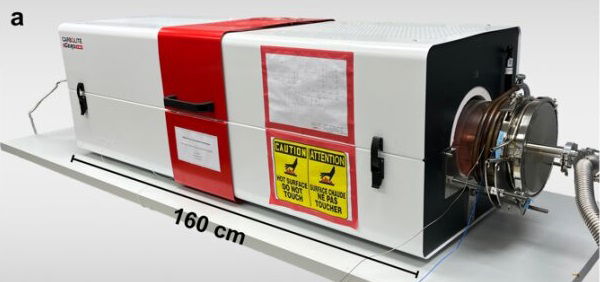
Fighting climate change means finding better ways to capture carbon dioxide (CO2) from factories, power plants, and other big polluters.
Right now, most carbon capture methods rely on chemicals that are expensive and require a lot of energy to use. But scientists have been looking at a powerful new tool for the job: graphene.
Graphene is a super-thin material made of a single layer of carbon atoms.
It’s incredibly strong and can be designed with tiny holes that allow only certain gases to pass through. This makes it perfect for filtering CO2 out of gas mixtures.
The problem?
Until now, it’s been really hard—and costly—to make graphene membranes in sizes large enough for real-world use.
That could be about to change, thanks to new research from a team at EPFL in Switzerland, led by Professor Kumar Agrawal.
The scientists have developed a new method for creating large, high-quality graphene membranes that can efficiently capture CO2 while staying affordable and easy to produce.
Their research, published in Nature Chemical Engineering, shows how they tackled some of the biggest problems in making graphene membranes.
First, they found a way to grow top-quality graphene using cheap copper foil instead of the expensive materials normally used.
Then, they used ozone (O₃) to etch tiny, evenly spaced pores into the graphene. These holes are just the right size to let CO2 pass through while blocking larger gases like nitrogen.
A major breakthrough came when the team figured out how to transfer the fragile graphene membrane without damaging it.
Normally, the membrane has to be floated onto another surface, which can cause cracks. The EPFL team designed a method to transfer the graphene directly inside the final membrane system, eliminating the risk of cracks and defects.
Using this approach, they successfully created graphene membranes measuring 50 square centimeters—much larger than anything previously achieved.
These membranes performed extremely well in lab tests, showing high CO2 selectivity and excellent gas flow. By tweaking the oxidation process, they were also able to increase the number of CO2-friendly pores, making the membranes even more efficient.
This new technology could revolutionize carbon capture. Unlike current systems that require heat and chemicals, graphene membranes work simply by applying pressure. This uses much less energy and could make carbon capture cheaper and more accessible.
The innovation doesn’t stop with CO2. These membranes could also be used for separating other gases, like purifying hydrogen or producing oxygen. With its low cost, scalability, and strong performance, this breakthrough could bring graphene membranes out of the lab and into real-world use sooner than we thought.



